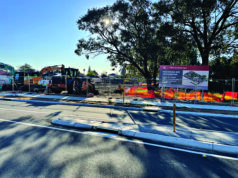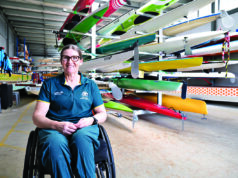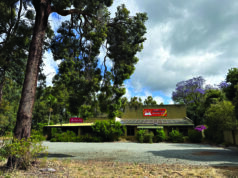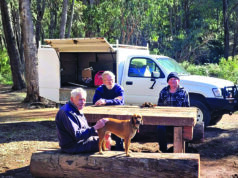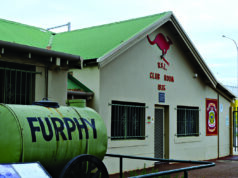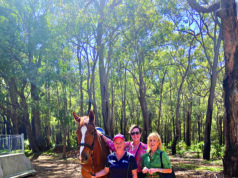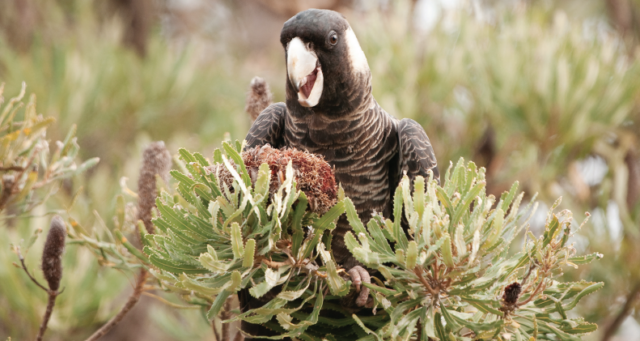
The City of Gosnells has formally adopted a position statement to protect endangered black cockatoos and will now prepare a response to Alcoa’s plans to expand bauxite mining in the Darling Range.
At its August 12 meeting, councillors voted unanimously to request the chief executive officer prepare a draft position statement on the proposed expansion—later to be considered by the council—which would involve clearing more than 6,000 hectares of native vegetation.
While the Darling Range is outside the city’s boundaries, councillors argued the potential impact on cockatoo habitat extended well beyond local government lines.
Cr Glenn Dewhurst, who moved the amendment, said there was little value in protecting habitat within Gosnells if vast areas of forest elsewhere were destroyed.
The council’s position builds on ongoing conservation efforts already underway in the city. Gosnells has planted more than 12,500 trees in the past year, including nearly 1,000 marri trees that provide vital food for cockatoos.
Artificial nesting hollows have been installed in conservation areas and water stations placed in parks to give birds a safe drinking source.
The city also works with residents to encourage planting on private land and supports the Kaarakin Black Cockatoo Conservation Centre in Martin.
The council’s move has drawn responses from conservationists, and the mining giant also weighed in.
Kaarakin Black Cockatoo Conservation Centre described the proposed clearing as “ecologically devastating.” The group said the Darling Range was critical habitat for Baudin’s, Carnaby’s and Forest Red-tailed black cockatoos, with old jarrah and marri trees providing the hollows and seasonal food sources the birds rely on.

“The Baudin’s black cockatoo may have declined to as few as 2000 individuals. The loss of mature trees that take over a century to form suitable hollows is an irreversible blow to their survival prospects,” the organisation said.
The centre warned that clearing more than 6,000 hectares would fragment habitat, displace entire faunal communities and accelerate population declines already driven by land clearing, climate change and other pressures.
“Species like black cockatoos do not respect local government boundaries. Protecting isolated habitat patches is futile if the surrounding ecosystems are gutted,” the centre said.
“If this development proceeds unchecked, we are not simply losing trees – we are choosing extinction for iconic, irreplaceable wildlife.”

Alcoa, however, said its operations are essential to the economy and to meeting global demand for aluminium, a material used in renewable energy, electric vehicles and everyday life.
The company employs about 6200 people and contractors in Australia and contributed $3.3 billion to the economy last year.
Its proposal covers three new mining areas across a development envelope of 23,900 hectares, but Alcoa noted clearing will be capped at 7,500 hectares over two decades.
According to Alcoa, it mines in a mosaic pattern, leaving unmined forest between small pits and beginning rehabilitation quickly.
The company also noted it has made changes to reduce community impacts, including a 2,600-hectare avoidance zone near Jarrahdale, protecting heritage sites and maintaining public access to trails such as the Bibbulmun Track and sections of the Munda Biddi Trail.
As part of its environmental management, Alcoa has committed to offsets covering tens of thousands of hectares of habitat for threatened species, including the black cockatoos.
The company said evidence shows that 100 percent of mammals and about 90 percent of birds and reptiles return to rehabilitated areas within 20 years.
Alcoa added it had planted about 750,000 native jarrah forest species over the past three months, including trees that can provide food for black cockatoos within four years.
“We do not mine in any old growth forest or areas of high conservation value and are proud to have rehabilitated more than 75 percent of the areas cleared for mining, with these at different stages of growth and forest restoration,” Alcoa Australia president Elsabe Muller said in a recent media release.
The proposal is now before the Environmental Protection Authority (EPA), which is undertaking a full assessment including a 12-week public consultation period, ending today (Thursday). A final ministerial decision is expected in 2026.
For the City of Gosnells, the new position statement highlights the council’s intention to play a role in broader environmental debates, linking its local conservation efforts with wider challenges for endangered species across the state.


